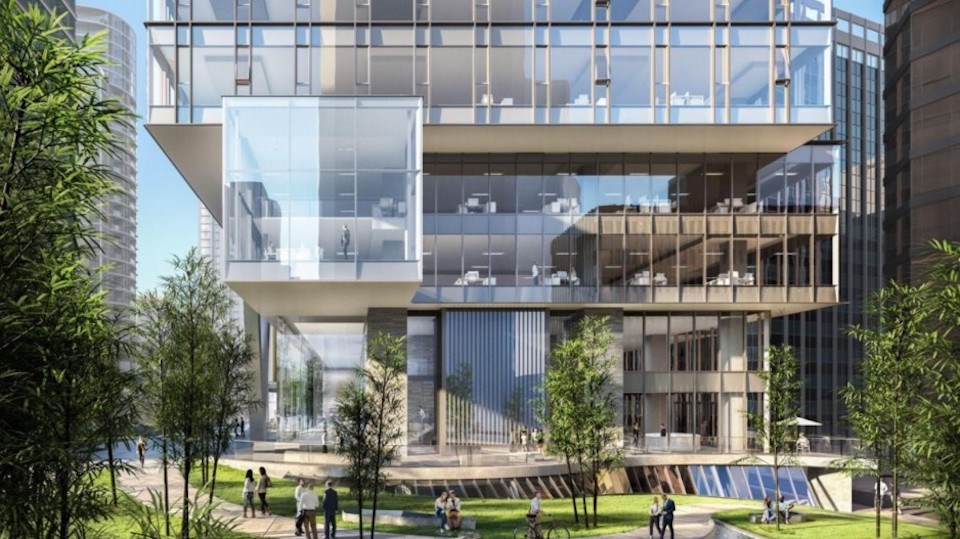From a zero carbon office building to an agrarian community in Tsawwassen, Greater Vancouver developers are finding innovative ways to ensure that projects are not negatively impacting the environment.
One Vancouver project in particular is showing how to use innovative techniques in order to go beyond what most other builds are doing to reduce carbon emissions.
Oxford Properties Group recently announced The Stack, its 37-storey commercial office tower in downtown Vancouver, has been awarded the Canada Green Building Council’s (CGBC) Zero Carbon Building - Design standard certification. It is the first commercial office tower to receive recognition of this kind.
According to Oxford, it is also the largest project in Canada to achieve this to date.
“We're really excited about this and it's also significant for the City of Vancouver. It shows what can be done with some innovation and a great team, in addition to what can be done to deliver on sustainability and the carbon zero carbon objectives that many municipalities are targeting,” said Andrew O’Neil, vice president of development, Oxford Properties.
These new innovations come at a time when the province is grappling with ideas of how to be proactive to climate change and the weather events that come with it. As B.C. enters the anniversary of the 2021 floods, conversations are shifting away from reaction to adaptation.
CGBG launched the zero carbon building pilot project in 2017, which allowed builders a framework to base design decisions off of, according to O’Neil.
He says that Oxford partnered on this pilot project from the beginning as part of the group's overall mandate to reduce its carbon footprint by 30 percent by 2025.
“I think we're at the front end of seeing this implemented across the industry. And I do expect further adoption of the standard by other folks,” he said.
“We learned how to apply the Zero Carbon standard for this project, and we're going to carry that forward to future projects that we're going to develop in Vancouver and elsewhere.”
Traditionally, buildings utilize natural gas boilers to produce heat. In the case of The Stack, Oxford has pivoted away from that to use electrification, according to O’Neil.
“We have a heat recovery system on this project that allows us to significantly reduce any gas you use to heat the building. And any gas that is used initially, will be offset 100%, so that's the real differentiator,” he said.
Many other developers are looking for ways to ensure that their builds are carbon efficient, according to Sasha Faris, president at First Track Investment.
“A lot of that is going to start weighing into people's investment practices from the level that they don't want to get into buildings that aren't meeting their carbon emission goals,” he said.
When it comes to building for the environment there are some considerations that make it difficult for builders such as the rigorous requirements of the BC Energy Step Codes and the cost of engaging in projects like this.
These codes are an optional path that can be used by some municipalities to incentivize builders to make new projects more energy efficient and go beyond the BC Building Code. The City of Vancouver currently has its own Zero Emissions Building Plan that is similar to the Step Codes.
“It's very tough from our standpoint, just the sheer construction costs of the materials that are better suited for the environment. The hardest part is that we need to be more efficient. I would say we have to find new economies of scale to make these products a bit more feasible and easier to obtain from a cost standpoint,” he said.
As more developers grapple with how to innovate their projects in a feasible manner, a project called Southlands Tsawwassen is going beyond the Step Codes to integrate social sustainability into a new project.
Consisting of 530 acres of land, with 80 per cent of it being public, Southlands is based on models of agrarian communities by placing homes next to agricultural land that feeds the community.
“We're progressively being forced anyway into some very, very high energy and environment standards. And yet, I think the missing piece of sustainability really is that social sustainability piece. Are we really bringing people together?” said Sean Hodgins, president of Century Group.
When it comes to social sustainability, it is much harder to codify, says Hodgins. His hope with Southlands is that it will bring people together in a meaningful way that will not only revitalize the land but also promote long-term living.
Faris says that construction is slowly but surely finding new ways to implement climate oriented initiatives and educate the public that their dollar is doing more than just buying a home.
“We obviously want to be a part of that conversation and say ‘Okay, what is it that we can do to make homeowners happy and feel good about their purchase? Does it benefit the current landscape and reduce the carbon footprint in a way where they feel good about the money spent on a condo, or detached home or whatever their housing situation might be,’” he said.



